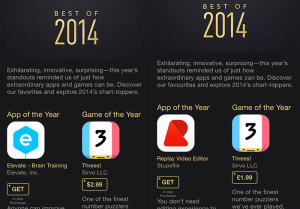This week I began writing software reviews for MacNN.com and as I was doing this one, I thought of you. While we’re writers, we do have to be so conscious of images and graphics now plus we can’t help but have a great camera in our pockets – because our phones all have them. I think one consequence from this is that we get eleventy-billion images.
I know I did.
Years ago I was enough into photography – I’ve had some published in US books – that I invested in Apple’s professional image application, Aperture. I’d have to check this, don’t make me swear to it, but when Aperture came out, it was so new and in such a new field that nobody quite knew what to make of it. They tried comparing it to Photoshop, where it failed because its image editing is much more basic. They tried comparing it to iPhoto and it failed because it isn’t as easy as iPhoto.
Yet I believe Adobe got it, they understood. Or maybe more likely they were eying up the same issues that Aperture was intended to solve. Adobe Lightroom became the other application in this new genre of serious photo management.
I was a bit fascinated by this because it reminded me of TV drama reviews where at first everyone is criticising a show and then later they’re adoring it. In this case they were poo-pooing an entire form of software and very quickly they were using it. But then I was also a lot fascinated by how they used it and how these two applications did the same thing in different ways.
Very broadly, very crudely, Aperture was a smash-and-grab do-anything kind of application where you bunged in your photos and then you worried about them later. Whereas Lightroom required you to add them in a certain way, process them in certain steps and really go through a particular workflow. I’m not that disciplined and Aperture just seemed to suit me better, so I bought Aperture.
Unfortunately maybe I needed a touch more discipline than I have. Or perhaps Aperture did. Because I added a lot of photos and then by mistake added them again. And again. Over time there are up to five duplicates of some shots and one thing Aperture is bad at is helping you spot those and delete them.
Flashforward a few years. I’ve pretty much stopped using Aperture because it was full brimwards with these duplicates and near-duplicates from when I would over-shoot events. Also, Apple abandoned Aperture. That was a big surprise to me and I think it was a big mistake. As ever with software, you can carry on using something. Nobody comes and switches off Aperture just because Apple doesn’t sell it any more. But there will come a time when they might as well have. There will be some moment in the future when you have to choose between getting some Apple OS X upgrade and sticking with an old one to keep Aperture alive.
I will upgrade. I say this not just because I know myself but because I know that I’ll upgrade before I notice that it kills Aperture.
So I have been mentally preparing to move my images out of it and I haven’t because I’m not mentally prepared to slog through all those bloody shots. Which is where Snapselect came in. Do you remember reading the word Snapselect about five miles up above this line? I reviewed Snapselect and it did – it is doing – the job I need. It’s taking me a time to work through everything because it is slow and I am busy but every few hours I take a minute to schlep through a few images and kill off the duplicates and the bad ones.
And my telling you that tells you the story behind this paragraph from my review:
We imported a fairly disastrous Aperture library that had over 30,000 images, and took up around 300Gb. It took Snapselect 11 minutes to load it, and then not far shy of 150 minutes to produce the thumbnails — which then took over two hours to analyze. Be smarter than us: bring in a few folders at a time. Snapselect makes that easy, but we just wanted to show off.
Hands On: Snapselect photo management app (OS X) – William Gallagher, MacNN (19 December 2014)
Read the full piece to get some screenshots – watch for my finger in frame in one – and details of how to get it. If you don’t need it, you may not even see the point. But if you do, go buy Snapselect because it solves the day.
